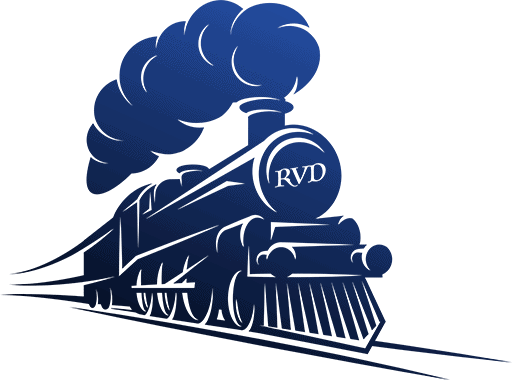The Ab was designed by New Zealander R. Pye-Smith specifically for New Zealand’s unstable terrain.
Initially, New Zealand’s railway locomotives (and ancillary vehicles) were imported, mostly from Britain.[1]
In the late 19th and early 20th centuries, Glaswegians, already widely respected as excellent shipbuilders, excelled equally well in the construction of railway locomotives.
Their success was attributed to the quality of their work, though it was also suggested that labour and materials in Scotland at the time were relatively cheap.[2]
Glasgow was the focus of Scotland’s pig-iron industry, and eventually of malleable iron and steel production. Cheap good-quality iron and steel were vital to the success of the heavy metal-working trades.
The quality of products produced in Glasgow’s foundries influenced the techniques of manufacture used in the iron and steel industries everywhere.
The hot-blast process for iron-smelting produced fine foundry iron, encouraging the growth of iron founding and of machinery manufacture.[3]
(An aside—a memory.) My now-deceased friend, William Arthur Snow, was an unsettled baby in Middlesbrough, North Yorkshire, in the early 20th century. His mum or dad would walk him back and forth, cradled in their arms, at night to encourage him to sleep. Bill told me his parents never needed to put a light on for these sitting-room nocturnal wanderings. All night, every night, the foundry lit up their world. (Middlesbrough, like Glasgow, has this industrial heritage. This story illustrates Britain’s commitment to the steel industry.)
Glasgow’s North British Locomotive Co was one of two Scottish companies manufacturing railway vehicles and parts. North British exported throughout the world, including to New Zealand.
The steamers Port Kembla, Waimate and Matakana, were among the ships that delivered the Ab Class locomotives to New Zealand in the early 20th century.[4]
New Zealand Government Railways chief draughtsman, R Pye-Smith, designed the Ab Class engine[5] and North British built eighty-three to Pye-Smith’s ultimate plan.
The development in 1880 of New Zealand’s refrigerated meat industry[6] and the need to expedite prompt locomotive servicing influenced the decision for New Zealand to develop its own facilities in which vehicle maintenance and manufacturing replacement parts could be undertaken. The resulting workshops developed into heavy industrial complexes capable of manufacturing entire locomotives.[7]
NZ Government Railways Addington Workshops built thirty-eight Ab Class locomotives and the private firm A & G Price Ltd (Thames) built twenty.[8]
It took approximately seven weeks to construct an engine using steel made from melted-down pig iron and scrap steel.[9]
Ab Class engines comprised simple super-heated locomotives with 17 by 26-inch cylinders and a tender that carried 3,500 gallons of water and five tons of coal. A large combustion chamber was fitted to the boiler, with the addition of a drifting valve which supplied saturated steam in small quantities to the valves and cylinders when the regulator was closed.[10]
This Class of engine had the 4-6-2 wheel alignment (as described by the Whyte Notation system). This comprised two leading axles (four wheels), three driving axles (six wheels) and one trailing axle (two wheels).[11]
With an average speed of thirty miles per hour,[12] the Ab was considered the most successful and versatile locomotive ever to work on New Zealand Railways.[13]
Read more about the Ab Class Locomotives in future articles.
[1] Atkinson, Neil, Te Ara: The Encyclopaedia of New Zealand, ‘Building the Rail Network’ www.teara.govt.nz/en/railways/page-4, Accessed 2 May 2017
[2] Vamplew, W. , The Business History Review Vol 46 No 3 (Autumn, 1972 pp 331 Scottish Railways & the Development of Scottish Locomotive Building in the Nineteenth Century. The President & Fellow of Havard College (Journal Article) http://www.jstor:org/stable/3112742 Accessed 2 May 2017
[3] Hume, John R., Second City of the Empire 1830s to 1914, Industry and Technology http://www.theglasgowstory.com/story/?id=TGSDE Accessed 2 May 2017
[4] Papers Past, New Zealand Herald, Vol LVIII Issue 17952, 30 Nov 1921 https://paperspast.natlib.govt.nz/newspapers, Accessed 6 May 2017
[5] Brian’s Place, The NZR Class Ab Locomotive, http://www.brians-place.com/trains/AB/NZR-AB-Class.html#DesignAndProduction Accessed 4 May 2017
[6] Atkinson, Neil, Te Ara The Encyclopaedia of New Zealand, Building the Rail Network, www.teara.govt.nz/en/railways/page-10 Accessed 2 May 2017
[7] Atkinson, Neil, Te Ara The Encyclopaedia of New Zealand, Building the Rail Network, www.teara.govt.nz/en/railways/page-10, Accessed 2 May 2017
[8] Brian’s Place, The NZR Class Ab Locomotive, http://www.brians-place.com/trains/AB/NZR-AB-Class.html#DesignAndProduction Accessed 4 May 2017
[9] Atkinson, Neil, Te Ara The Encyclopaedia of New Zealand, Building the Rail Network, www.teara.govt.nz/en/railways/page-10, Accessed 4 May 2017
[10] Papers Past, Evening Post, Vol XCI Issue 12, 15 January 1916 https://paperspast.natlib.govt.nz/newspapers
Accessed 4 May 2017
[11] Roll Models Ind. Railworks http://www.rmirailworks.com/white-classification-of-locomotives.asp#.WQq_e4VOLmE Accessed 3 May 2017
[12] Papers Past, Evening Post, Vol XCI Issue 12, 15 Jan 1916 pp 6 https://paperspast.natlib.gvt.nz/newspapers Accessed 4 May 2017
[13] Atkinson, Neil, Te Ara The Encyclopaedia of New Zealand, Building the Rail Network, www.teara.govt.nz/en/railways/page-4, Accessed 2 May 2017

